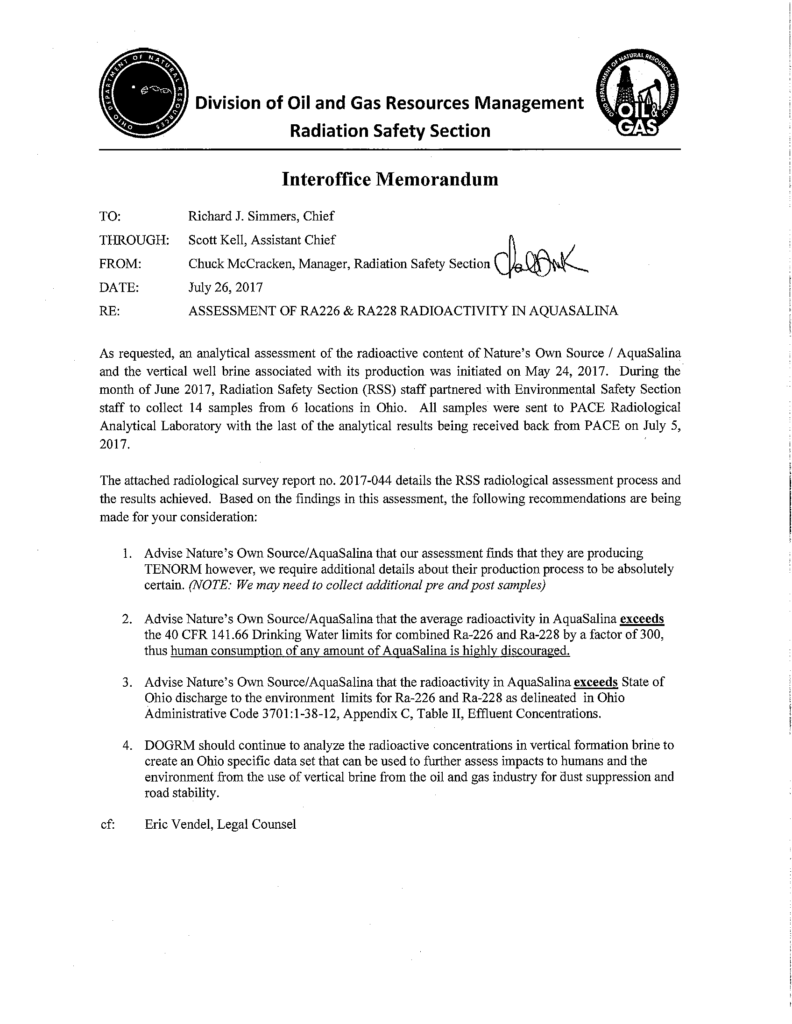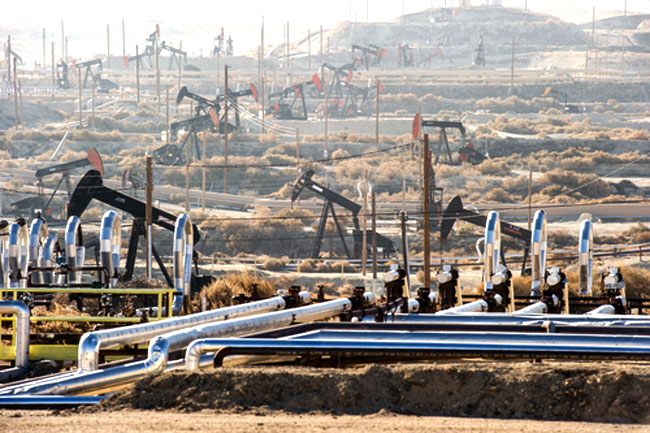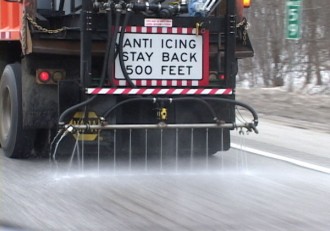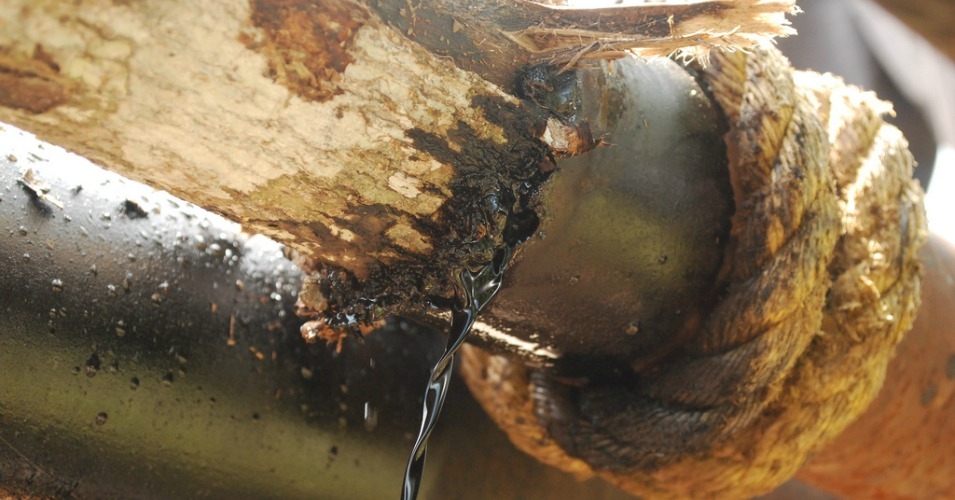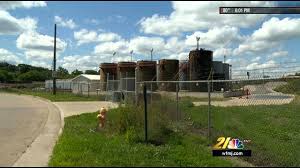Ashtabula County has the second highest number of injection wells in Ohio. Because there is so little regulation and transparency over the wastewater associated with hydraulic fracturing (aka “fracking”), we can only guess about the toxins that are being brought into our community. Click on the links below to educate yourself on the possible toxins entering our watershed.
Click here for more research on the Risks and Harms of Fracking
The Oil & Gas industry is exempt from Clean Water and Air Acts
The federal laws that protect our drinking water and the air we breathe do not apply to the Oil & Gas industry. Hydraulic fracturing is exempt from these laws – which explains why fracking companies are allowed to dispose of wastewater on roads, in landfills, and in unstable injection wells.
What is “Brine”?
“Brine” is the benign word that the oil and gas industry uses to describe fracking wastewater. There is salt and water in the toxic mix that is leftover from the process of hydraulic fracturing, but that’s not all. A 2011 study by Congress says that of the 750 chemicals used in fracking, 29 chemicals are either known or possible carcinogens. Read more by clicking here.
The types of chemicals used in fracking, and the depth of earth where the industry is drilling, gives many reasons to be concerned that fracking waste is toxic to our health. There are countless articles describing the health threats of fracking waste:
- “Fracking Waste: Too Toxic, Even for a Hazardous Waste Site“
- “Residents living nearer natural gas wells report more health symptoms, Yale study says.”
- “Fracking Poisoning Families at Alarming Rate: Report”
- “New Research Shows Fracking is Even Worse for our Health than we Thought”
- “Saltwater from fracking spill much different from ocean water”
- “Here’s What Fracking Can Do to Your Health”
The EPA released a report on Frac Focus in 2015, where drillers disclose the chemicals they use in fracking. Operators designated 11% of all ingredient records as confidential business information (they get to decide what they will disclose. No one reviews or challenges their confidential records.) One or more ingredients were claimed confidential in more than 70% of disclosures. Three articles discuss this:
Brine Sprayed on our Roads?
Believe it or not, potentially toxic, carcinogenic, radioactive waste is being sprayed on our roads. Waste from the oil and gas industry has historically been used as a dust suppressant on dirt roads and a de-icer on all roads. Now, the industry is so desperate to get rid of the millions of gallons of wastewater from fracking that they passed federal regulations that allow them to treat this water like benign “brine.” This wastewater is now sprayed on our roads. ACWW members have seen the same trucks that go to and from injection well sites, also spraying wastewater onto their residential roads. Read more in the article below.
- “The Fracking Industry’s Answer to Toxic Wastewater: Spray It On Public Roadways.” January 16, 2016
- “Spraying Fracking Brine on Roads”
- “Is brine fine for Conneaut roads?”
Fracking Waste Going into our Landfill?
The oil and gas industry is also allowed to dispose of solid waste from fracking into Ohio landfills. We don’t know if our Geneva landfill has this waste, as there is no record-keeping or regulation to track the specific waste going into landfills. Solid wastes may include pieces and parts of drill rigs, solidified fracking waste, and more. Read more in the articles below.
- “Will Ohio start accepting drilling brine at 40 landfills?” January 26, 2013
- Ohio EPA’s instructions for accepting fracking waste into landfills
- “Fracking waste sent to Ohio landfills”
Fracking Waste in Injection Wells
Class II Injection Wells are where the oil and gas industry legally disposes of wastewater from hydraulic fracturing, and horizontal hydraulic fracturing. Injection wells are drilled miles down into the earth, placing fluid deep underground into porous rock formations, or into or below the shallow soil layer. Injection wells have been proven to cause earthquakes, including here in NE Ohio. Ashtabula County is now a seismically active region – a scary thought given that Perry Nuclear Power Plant is within miles of our injection wells. Injection wells have also proven to crack and leak. These are well-documented facts. The films Gasland and Gasland 2 do a great job exposing the oil and gas industry’s own knowledge of leaking injection wells.
- “How Oil and Gas Disposal Wells Can Cause Earthquakes“
- “Fracking-related Earthquakes“
- “Fracking, wasterwater-injection wells raise Ohio’s quake risk, feds say”
- “Fracking Led to Ohio Earthquakes”
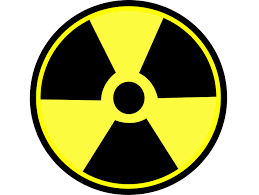 Is it Radioactive?
Is it Radioactive?
Below is a letter from Ohio’s Division of Oil & Gas’s own Radiation Safety Manager, stating that “Aquasalina”, or “Nature’s Own Source,” is above acceptable levels of radioactivity and should not be sprayed on roads as a dust suppressant.
